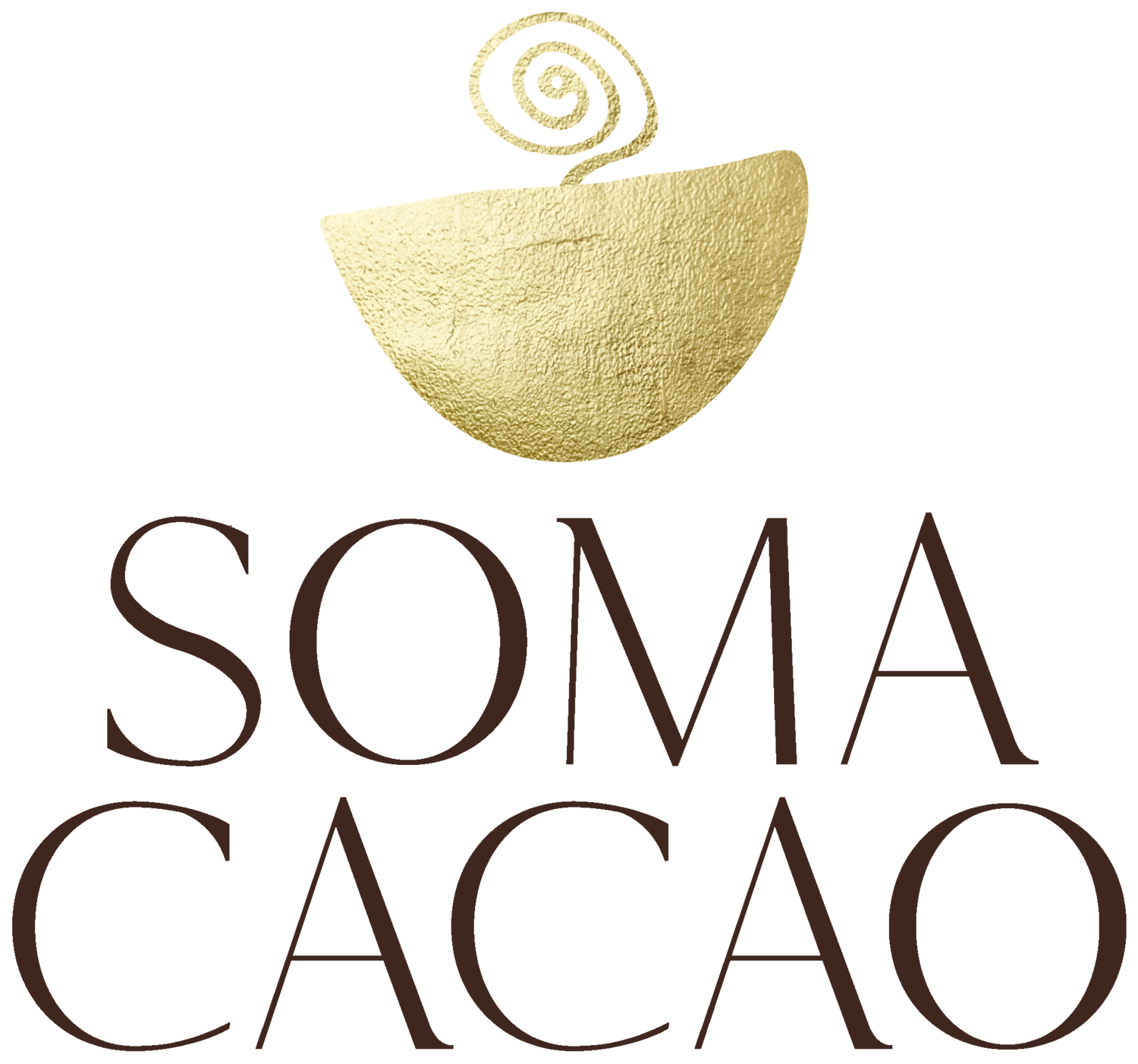
“Cacao is a phenomenon, for nowhere else has nature concentrated such a wealth of valuable nourishment in so small a space.”
Alexander von Humbolt, German Scientist.

ABOUT CACAO.
WHAT IS CACAO?
Cacao (prounounced ka-kaw) generally refers to the fruits and seeds (which we call beans) of the theobroma cacao tree, a small evergreen native to tropical America. Theobroma comes from the Greek words ‘theos’, meaning '“god”, and ‘broma’, meaning “food” therefore theobroma cacao literally means
“food of the gods”.
In their raw state, cacao seeds are very bitter. Somehow, ancient civilisations discovered that the process of drying, fermenting and roasting the seeds mellows out the flavours. One theory holds that the Olmecs may have eaten the cacao fruit, spat out the seeds into the fire, and the rich smell of them roasting inspired them to think
“maybe there’s something more we could do with this”.
Our cacao has been hand-picked, fermented, and sun-dried, then roasted very lightly and stone-ground into a paste, which sets and solidifies. We chop it, package it, and deliver it to you. You’ll prepare it into a drink - like coffee, but more gentle, smooth and long-lasting, and without the brain-fog and jittery hands later in the day.
Normally the paste is then highly processed to make cacao powder or chocolate. This decreases the levels of psychoactive compounds, and the powdered form destroys the flavour and texture.
So we only sell pure, whole bean cacao paste, we add nothing, we take nothing away.
A (cacao) pod of gold.

A BRIEF HISTORY OF CACAO
In Aztec and Mayan legend, cacao was discovered by the gods (or for the Aztecs, by the god Quetzalcoatl) in a mountain containing other delectable foods (like maize, a.k.a. corn - considered even more sacred than our beloved cacao). The god ‘Sovereign Plumed Serpent’ gave cacao to the Maya after humans were created from maize by divine grandmother goddess Xmucane.
Traces of theobromine, cacao’s unique stimulant, were found on pots and vessels belonging to southern Mexican Olmecs from around 1500 BC. While there is no written history for the Olmecs, they were probably the first to ferment, roast and grind cacao beans for drinks, according to Hayes Lavis, a cultural arts curator for the Smithsonian’s National Museum of the American Indian. Eventually, the Olmecs shared cacao with the Mayans, who revered it; using it in rituals, celebrations and to finalise important trade deals.
The Aztecs also worshipped cacao, believing it was gifted to them by the gods. Like the Mayans and Olmecs, they enjoyed cacao as a bitter, spiced beverage in ornate containers, and traded cacao beans as a currency.
And did you know…
The infamous, mighty Aztec ruler Montezuma II allegedly drank gallons of cacao each day for energy and as an aphrodisiac. He even fed it to his armies prior to battle.
Spanish conquistadors introduced the drink into Europe in the 1500s after witnessing the Aztec king drinking cacao at the royal court in Tenochtitlan — what is now Mexico City. Within a century the culinary and medicinal uses of cacao had spread to France, English and elsewhere in Western Europe. Cacao plantations were subsequently established in the Caribbean and Philippine colonies.
The Mayan word cacao entered scientific nomenclature in 1753 after the Swedish naturalist Linnaeus published his taxonomic binomial system and coined the genus and species Theobroma cacao (food of the gods), a combination that blended Greek with Mayan etymology. And after the 1880s, cacao was well and truly established as the chocolate we know today, having been introduced as a commercial crop throughout West Africa.

CACAO TODAY.
Not only is cacao densely rich in nutrients, its chemical composition yields scientifically proven heart-opening, mood-boosting effects. Today, cacao is used as a health food; a non-jittery, longer lasting, heart-opening coffee alternative; and in conjunction with practices like yoga and dance. With a growing body of research reinforcing its benefits, it’s becoming more and more popular worldwide, especially in the Americas and Europe. We’re joining the cacao-band-wagon Down Under too, though there’s still confusion in Oz about the difference between whole bean cacao paste and regular cacao powder.
With the rising popularity an increasingly heated debate has risen about cultural appropriation of cacao, which we encourage you to read more about here.

THE DARK SIDE OF CHOCOLATE.
Now, cacao plantations in Ghana and the Ivory Coast provide 80% of the world’s chocolate. The historical shift from cacao production in the Americas to West Africa coincided with the abolition of slavery. Since the slaves couldn’t be brought from Africa to America, cacao was taken from America to the slaves. The hard work of clearing the fields and harvesting the fruit is often done by boys who have been sold into slavery, some as young as 9 years old. And even though industry leaders including Mars and Nestlé signed a 2001 treaty pledging to eliminate the “worst of child labour” in West Africa, hundreds of thousands of children continue to work on cocoa plantations.
There are some excellent ethical chocolate initiatives out there, so if you’re buying chocolate bars, we suggest you look out for fair trade labels.
Or, just stick to our Soma Cacao.














